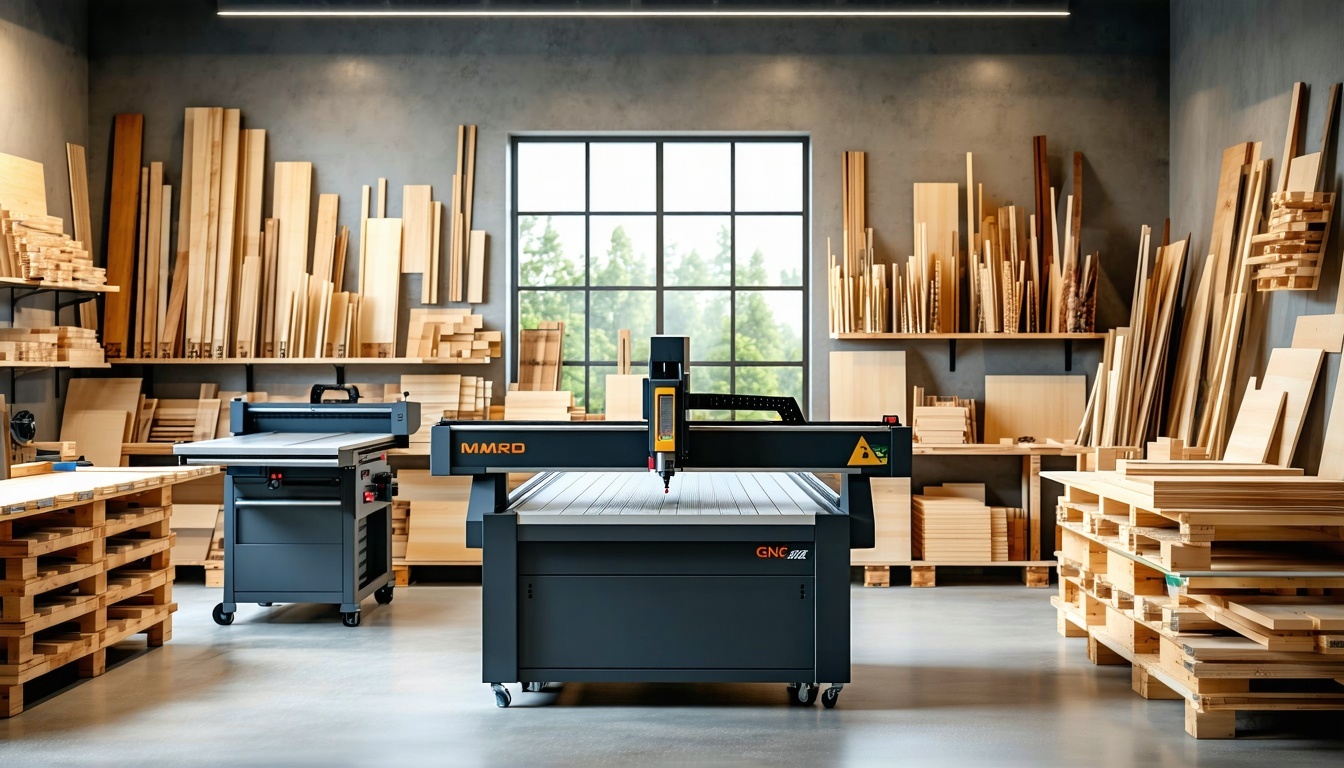How Woodworking Businesses Benefit from Equipment Financing
Woodworking is a craft—but it’s also a business. Whether you're running a small custom furniture shop, cabinet-making business, or large-scale millwork operation, one thing is clear: quality equipment is essential. From CNC routers and planers to dust collection systems and jointers, your tools define your efficiency and finish.
But buying woodworking equipment outright can drain your cash flow. That’s why many shop owners turn to equipment financing to grow their operations strategically. In this guide, we’ll break down exactly how woodworking businesses benefit from equipment financing, what types of tools you can finance, and how to get started.
What Is Equipment Financing?
Equipment financing is a type of business loan specifically used to purchase equipment. The equipment itself serves as collateral, making it easier to qualify and often faster to get approved than unsecured loans.
Key Features:
-
Financing up to 100% of the equipment cost
-
Fixed monthly payments over 1–7 years
-
No need to pay the full cost upfront
-
Equipment is yours to use—and usually own—right away
Why Woodworking Businesses Choose Equipment Financing
🛠️ 1. Access High-Quality Tools Without Large Upfront Costs
Woodworking tools aren't cheap. A CNC router can cost $10,000–$100,000, and a full shop setup might include:
-
Dust collection system: $5,000–$20,000
-
Edge banders and panel saws: $10,000+
-
Sanders, jointers, and planers: $2,000–$8,000 each
-
Spray booths or finishing equipment: $5,000–$50,000
Financing lets you acquire these tools without wiping out your working capital, allowing you to stay agile in your business.
💼 2. Improve Productivity and Output
Newer machines are faster, more accurate, and more automated. Financing enables you to:
-
Take on larger or more complex projects
-
Increase throughput without hiring more staff
-
Reduce human error and material waste
Example: Upgrading from a manual router to a CNC system can cut production time in half and allow for consistent, repeatable output.
💸 3. Preserve Cash Flow for Materials, Payroll, and Marketing
Running a woodworking business involves ongoing costs:
-
Lumber, adhesives, and finishing materials
-
Employee wages
-
Rent or mortgage for your shop
-
Marketing and lead generation tools
With fixed monthly payments, you can plan your cash flow and avoid large one-time expenses that can disrupt operations.
7 Benefits of Equipment Financing for Woodworkers (Featured Snippet Section)
-
Acquire essential tools quickly
-
Preserve cash for operational needs
-
Increase project capacity and revenue
-
Upgrade to safer, more efficient equipment
-
Take advantage of tax deductions
-
Improve product quality and consistency
-
Build business credit
What Woodworking Equipment Can Be Financed?
Virtually all new and used woodworking machinery can be financed, including:
🪵 Cutting and Shaping Tools
-
CNC routers
-
Table saws
-
Bandsaws and scroll saws
-
Lathes and tenoners
🌫️ Dust and Finishing Systems
-
Dust collectors and air filtration systems
-
Spray booths
-
Sanders and polishers
-
Paint systems and drying racks
🧱 Joinery and Assembly Tools
-
Biscuit joiners and mortisers
-
Edge banders and dowel machines
-
Pneumatic nailers and presses
💻 Technology Upgrades
-
CAD/CAM software
-
Laser engravers
-
Smart measurement and automation tools
💡 Tip: Even installation, delivery, and training costs can often be included in your financing plan.
How to Qualify for Woodworking Equipment Financing
Most lenders have straightforward criteria:
📈 Business Financials
-
Minimum of 6–12 months in business
-
At least $50,000–$100,000 in annual revenue
💳 Credit Score
-
620+ personal credit score is ideal
-
Better scores yield better interest rates and terms
🧾 Required Documents
-
Business bank statements
-
Equipment quotes or vendor invoices
-
Business license or registration
🛠️ Startups may still qualify with a co-signer or larger down payment.
Equipment Financing vs. Leasing: What’s the Difference?
| Feature | Equipment Financing | Equipment Leasing |
|---|---|---|
| Ownership | Usually own the equipment | Typically rent the equipment |
| Tax Benefits | Eligible for Section 179 | May deduct lease payments |
| Upfront Cost | May require down payment | Often little to none |
| Term | Fixed; 1–7 years | Flexible; short- or long-term |
| Best For | Long-term use | Short-term or rapidly changing tech |
Real-World Example: Small Woodshop, Big Results
Case Study: Redwood Custom Cabinets
-
Needed: $85,000 for a CNC router + edge bander
-
Financing: 5-year loan with fixed monthly payments
-
Result:
-
3x increase in output
-
Hired one assistant instead of three
-
Landed contracts with two local homebuilders
-
Takeaway: Equipment financing allowed them to scale without sacrificing cash flow or hiring more staff.
Tax Advantages of Equipment Financing
Thanks to Section 179 of the U.S. tax code, businesses can deduct the full purchase price of qualifying equipment (up to $1,220,000 in 2024) in the year it's placed in service—even if it's financed.
🧾 Example:
-
You finance a $60,000 edge bander
-
You deduct the full $60,000 from your taxable income
-
This can reduce your tax liability by $10,000–$20,000, depending on your tax rate
Always consult your tax advisor to maximize benefits.
External Authoritative Links
-
IRS Section 179 Deduction Guide (opens in new tab)
-
Woodworking Network – Industry News (opens in new tab)
-
National Wood Flooring Association (opens in new tab)
Conclusion: Grow Your Woodworking Business with Smart Financing
From improving output and reducing labor to modernizing your shop floor, equipment financing helps woodworking businesses grow strategically and sustainably. Whether you're just starting or expanding your operation, financing puts better tools—and better opportunities—within reach.
Need Better Tools Without Breaking the Bank?
Explore affordable equipment financing options today or connect with our team to build a financing plan tailored to your woodworking business.











